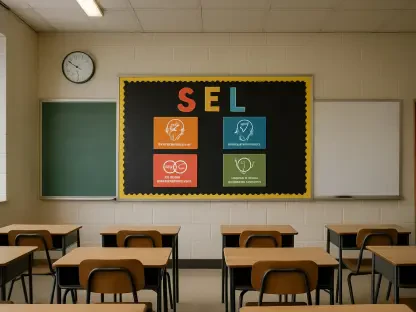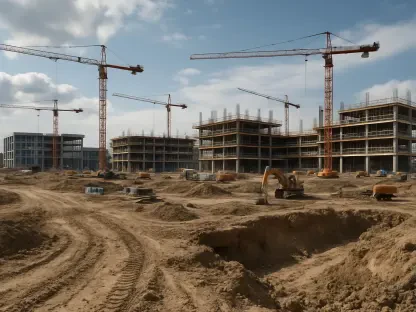Efforts to bridge the educational gap between black and white students in South Africa face enduring challenges that necessitate a reevaluation of current academic development programs. Since South African universities opened their doors to black students decades ago, various initiatives have been established to improve their educational success. Despite substantial investment and governmental support, a gap persists, highlighting a misalignment between program goals and actual outcomes. Previous attempts to equalize academic achievements have not fully addressed the dropout rates and slower academic progress often experienced by black students. By examining the historical context and potential future directions of academic development, a comprehensive understanding of the issue emerges. From its inception in the early 1980s to its transformation post-1994 democracy, academic development in South Africa has undergone significant but insufficient change. The persistence of disparities signals the need for innovative approaches that not only address the symptoms but also the underlying causes of these inequalities.
Historical Context and Persistent Challenges
Academic development for black students in South Africa originates from a complex history marked by inequality and transformation. The early 1980s marked the beginning of significant changes in higher education when black students gained access to previously segregated universities. This period witnessed the establishment of academic development programs intended to level the educational playing field. Following the democratic transition in 1994, these initiatives aimed to foster societal transformation through enhanced educational opportunities for black students. Despite these efforts, the realities on the ground have not always aligned with aspirations. Reports submitted to relevant authorities indicate ongoing challenges in achieving equitable outcomes for diverse student populations. Factors such as high dropout rates and suboptimal academic progression remain concerns. For instance, data from the Council on Higher Education in 2022 showed a notable performance gap, with white students outperforming black students by several percentage points. This indicates the existence of systemic issues that require attention beyond current strategies.
Another significant challenge lies in the mismatched educational strategies that fail to resonate with the lived experiences of many black students. The relevance of university curricula is often questioned, as many educational approaches do not adequately consider students’ diverse contexts and needs. Feedback from students and academic bodies suggests more contextually relevant educational practices are necessary. Efforts to modify teaching strategies and curricula must incorporate the cultural realities and academic challenges faced by black students. These aspects remain crucial for ensuring successful educational outcomes. Moreover, some critics argue that existing practices can sometimes be too rigid and unresponsive to students’ needs, leading to disengagement and further perpetuating existing educational inequalities. Therefore, a reevaluation of these strategies is essential for fostering inclusivity and effectiveness in academic development.
Bridging the Gap through Research and Practice
Efforts to improve academic development for black students must increasingly rely on broad-based research and collaborative practices that emphasize contextual understanding and practical application. Theoretical and scholarly investigations are vital for unraveling the complexities that hinder educational success. Current research often falls short by being too localized and limited in scope, failing to provide comprehensive insights. Understanding factors like dropout rates and academic struggles demands a broader perspective that considers various educational environments. By integrating both experienced and novice academic development practitioners, enriched perspectives can evolve. Although notable contributions have emerged from both groups, these efforts remain constrained if not deployed to address broader challenges. Highlighting collaboration across academic domains can revolutionize educational practices. Establishing communities of practice facilitates reciprocal mentorship, enabling knowledge-sharing and rigorous, real-world research on learning dynamics. Such practices cultivate a shared commitment to understanding and improving teaching and learning processes across different settings.
Instituting peer networks allows academics to enhance teaching and scholarly skills while fostering a culture of continual reflection and growth. Within these networks, educators can engage in theory-building alongside seasoned facilitators, offering opportunities to critically assess and refine their instructional methods. These networks provide structured and informal avenues where academics can explore evidence-based strategies. Supported by insights gained through teaching experiences and postgraduate education engagements, this collaboration enhances understanding of effective academic development strategies. In these environments, educators can collectively explore challenges and generate innovative solutions. Ultimately, the engagement of experienced mentors and novice practitioners enriches the process of academic inquiry and promotes a sustainable approach to addressing the complexities of educational inequality.
Towards a Transformative Educational Landscape
Efforts to close the educational divide between black and white students in South Africa struggle with persistent challenges demanding a reevaluation of academic development programs. Although South African universities have welcomed black students for decades, initiatives aimed at enhancing their educational success have fallen short. Despite substantial investment and government backing, the gap remains, pointing to a disconnect between the objectives of these programs and actual results. Earlier endeavors to balance academic achievement have not adequately tackled dropout rates or the slower academic progress of black students. Reviewing the historical context and considering potential future paths in academic development provides a well-rounded understanding of the issue. From its start in the 1980s to its evolution following the 1994 democratic shift, academic development has seen significant yet insufficient changes. The continued disparities demand novel solutions addressing both symptoms and root causes of these inequalities.









